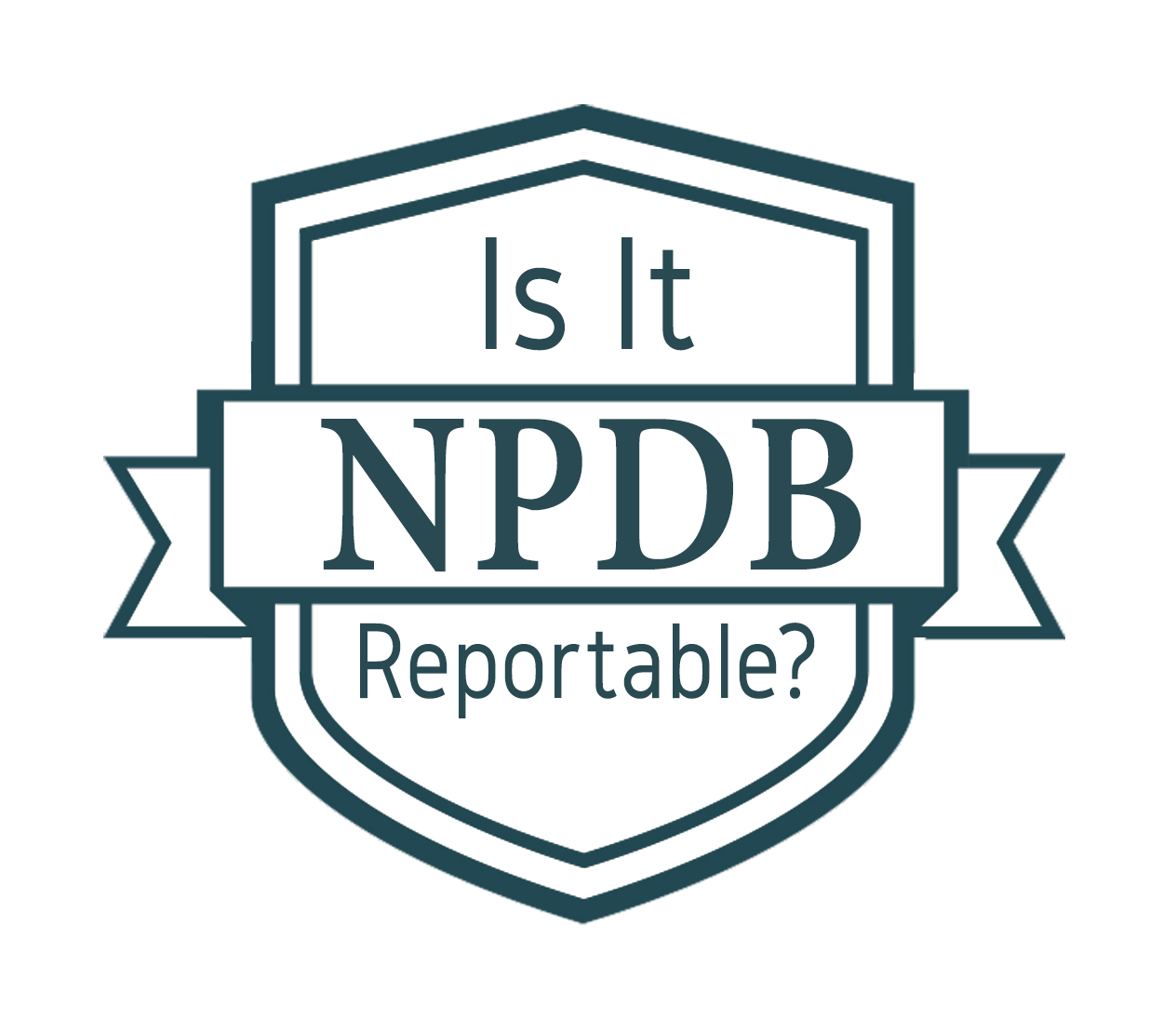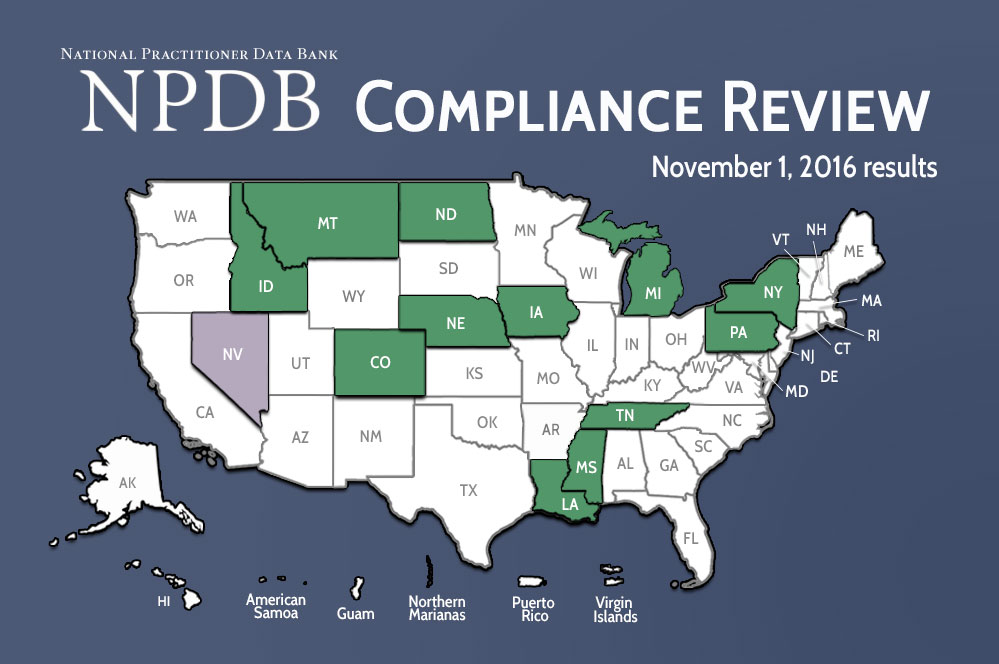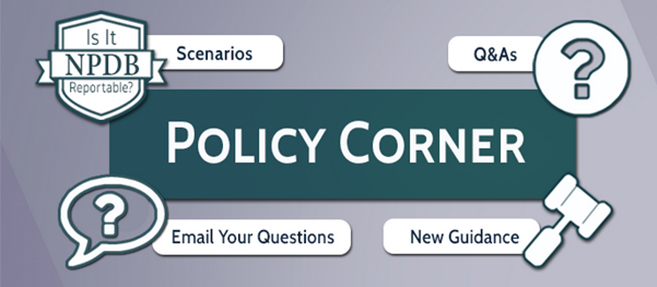Did You Know: You Can Upload Your Registration or Self-Query Documents
As part of our commitment to simplify processes and reduce paper, the NPDB allows some documents to be submitted electronically. If the NPDB requires documents for approval for entity registration or Self-Query, you may scan and save an electronic copy, then use the website's upload feature to send them to the NPDB. This replaces the need to mail or fax these paper forms to the NPDB. We will continue to add the upload feature to other processes in the future.
Is It Reportable?
 If a state board that regulates dietitians issues a cease and desist order against a person who is not a registered dietitian but who is practicing as one, is the issuance of the cease and desist order reportable to the NPDB?
If a state board that regulates dietitians issues a cease and desist order against a person who is not a registered dietitian but who is practicing as one, is the issuance of the cease and desist order reportable to the NPDB?
Yes. In this example, the state regulates the practice of dietetics and prohibits individuals from practicing as dietitians - even if they do not refer to themselves as dietitians, licensed dietitians, or registered dietitians - if they have not been licensed by the board. NPDB regulations require the reporting not only of individuals who are licensed, but also of those who hold themselves out to be so licensed. Therefore, the cease and desist order issued by the board would be reportable.
New Compliance Infographic Released
 To further its mission of improving the quality of health care, and reducing fraud and abuse, the NPDB continues its compliance effort to improve the completeness and accuracy of data reported to the NPDB. Most recently, the NPDB released the results of its latest compliance review on November 1, 2016. This review examined state licensing and certification board adverse actions taken between January 2013 and December 2014 for 13 states.
To further its mission of improving the quality of health care, and reducing fraud and abuse, the NPDB continues its compliance effort to improve the completeness and accuracy of data reported to the NPDB. Most recently, the NPDB released the results of its latest compliance review on November 1, 2016. This review examined state licensing and certification board adverse actions taken between January 2013 and December 2014 for 13 states.
The review compares adverse actions taken by state licensing and certification boards to the reports the boards submit to the NPDB, with the purpose of ensuring that all actions that must be reported according to federal law have been correctly reported to the NPDB. It includes professions that are queried most often by organizations registered with the NPDB, plus a random sampling of other professions. All states and territories are reviewed every two years. The NPDB continues to work with state boards that need assistance with meeting federal reporting requirements.
The NPDB has always shared the results of its reviews organized by state and by profession, but now offers a compliance map infographic that combines the two, showing on the U.S. map what states and territories were reviewed. Only the boards and professions listed were part of the compliance review and received a status of "compliant", "non-compliant", or "working toward compliance." A state's overall compliance status is not reflected in this infographic. For full compliance results, visit Reporting Compliance Status by State.
New Guidance Added to NPDB’s Policy Corner
 Two new policy pages have been added to the NPDB’s Policy Corner, which was introduced last month. The new pages cover the following topics:
Two new policy pages have been added to the NPDB’s Policy Corner, which was introduced last month. The new pages cover the following topics:
- Reporting Actions by Non-Licensing Boards, which explains when and how to report to the NPDB actions taken by non-licensing boards,
- The Use of Private Agreements, which explains why private agreements do not exempt an organization from submitting a reportable action to the NPDB.
Previous guidance featured in the Policy Corner includes:
- Medical Malpractice Payments and Sole Shareholder Employees, which explains why a payment made by a sole shareholder corporation (SSC) (or by a sole professional corporation) for the benefit of a practitioner employed by the SSC is reportable on behalf of the named or identified practitioner alone, not the SSC's owner.
- Medical Malpractice Payment to Non-Patients, which explains why NPDB's statutes and regulations do not limit the filing of medical malpractice reports based on the identity of the payee.
- Reporting Impaired Practitioners, which lists when it is appropriate for a state licensing board to file an Adverse Action Report with the NPDB on an impaired practitioner who is seeking treatment.
- Reporting Participation in Pretrial Intervention Programs, which examines whether a state prosecutor involved in an example court case should report to the NPDB the practitioner's entry into the pretrial intervention program, even though no adjudication occurred.



 CLOSE
CLOSE